Riding through Honduras and Nicaragua
— Central America — 5 min read
April 23 - 27, 2010
South of Guatemala are the countries El Salvador and Honduras. Due to time constraints, I decided to skip El Salvador to avoid the El Amatillo border crossing between the southern end of El Salvador and Honduras. It's notorious for its corruption and the officials making you run around in circles for hours, and likely paying hefty fines for something or the other. This usually leaves a sour feeling about Honduras and wanting to give it a proper chance to make an impression, I chose to go through the mountains of Honduras and visited a few colonial cities. After two days in Honduras, I crossed into Nicaragua and couldn't escape their well-known police traps, but still managed to leave with a positive feeling about the country after visiting Granada. These countries have been torn by war and political strife in recent times, but things are calm these days and the friendly locals make for a safe passage.
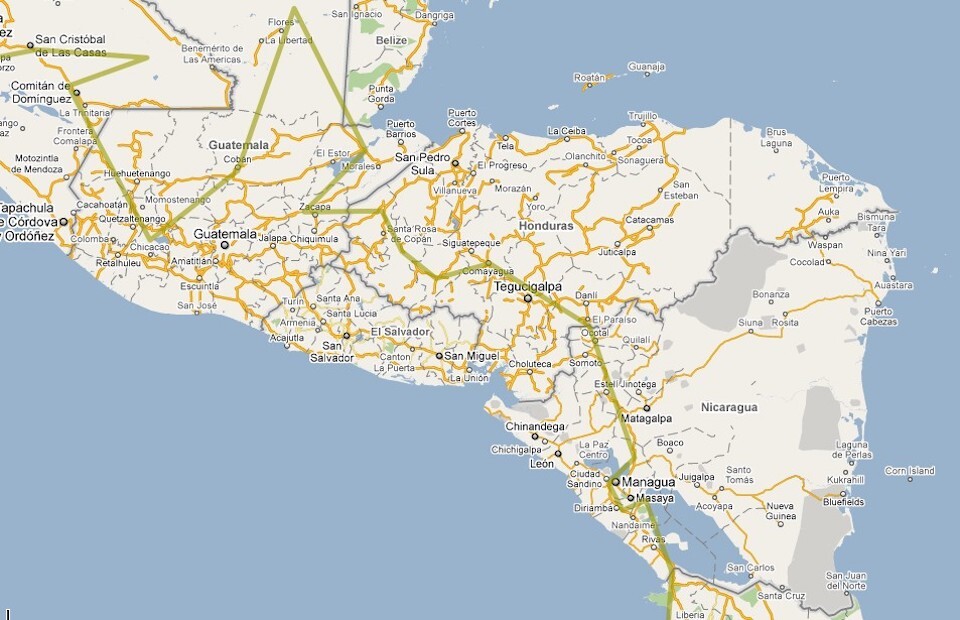
My route map from Guatemala thru Honduras into Nicaragua. Click on it to go to the interactive version in Google Maps.
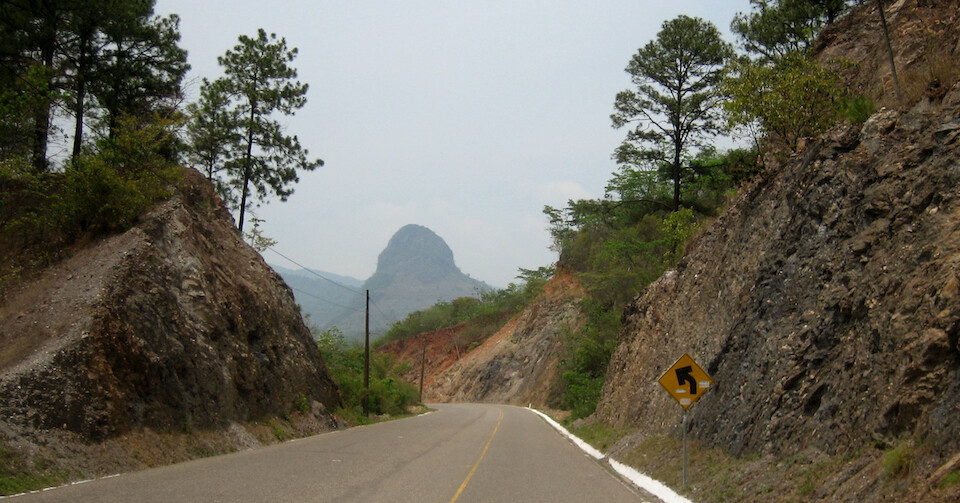
Getting to the El Florido border crossing between Guatemala and Honduras.
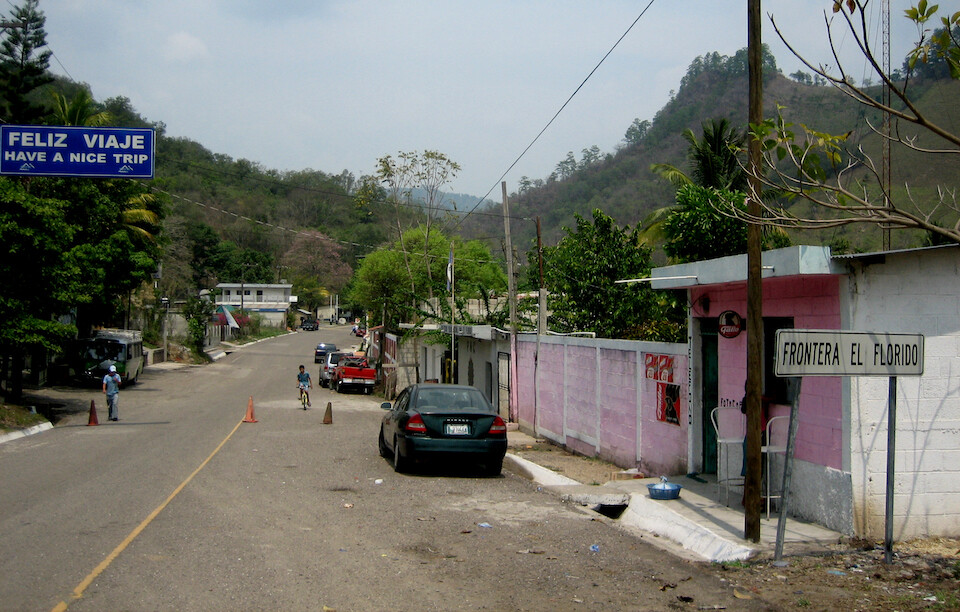
Border towns are not places to hang out, but during the daytime, it's all good.
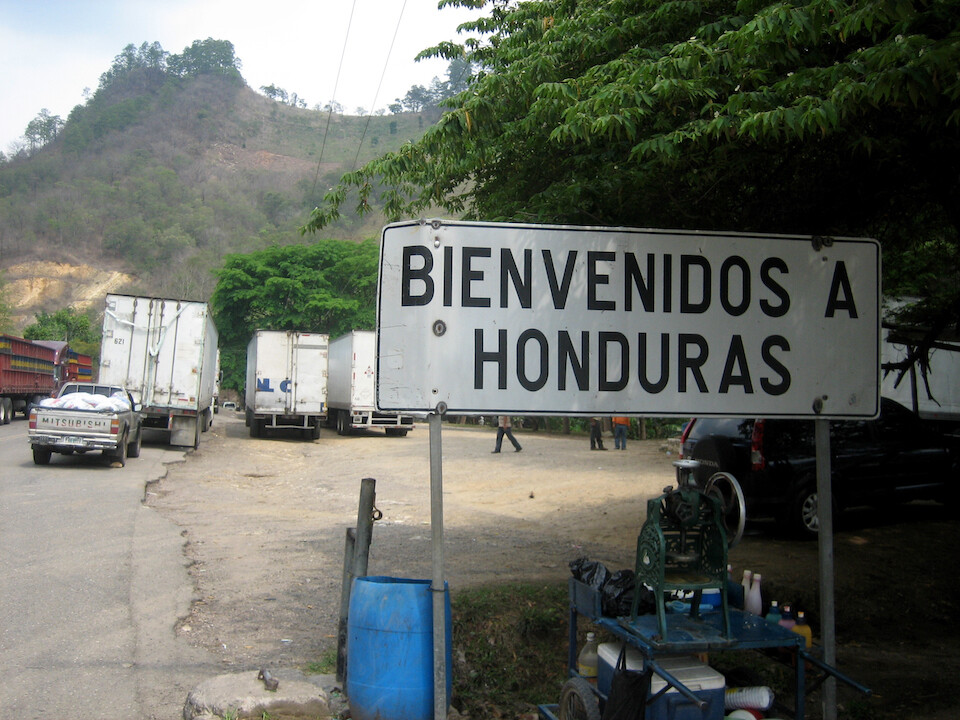
Welcome to Honduras.
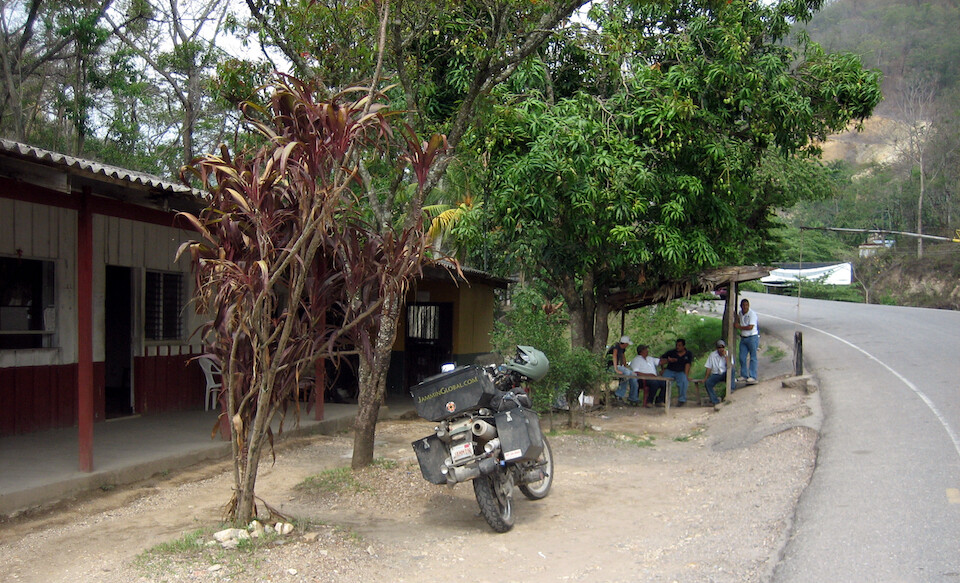
Checking in the bike at Honduran customs. Cost USD 35.
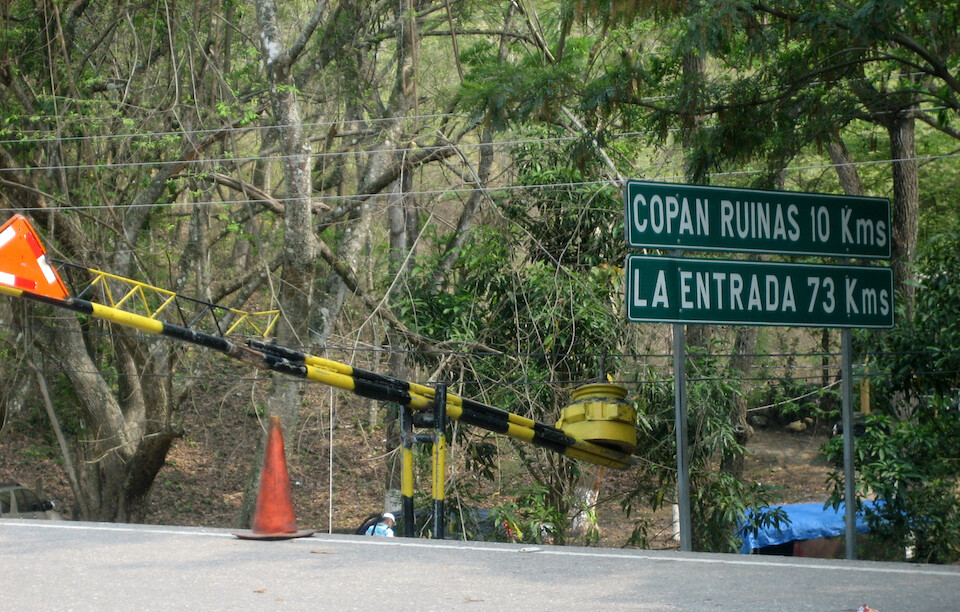
The El Florido crossing is close to the Mayan ruins of Copan, but I didn't have time to stop and visit. I was heading further inland to the hill country town of Gracias.
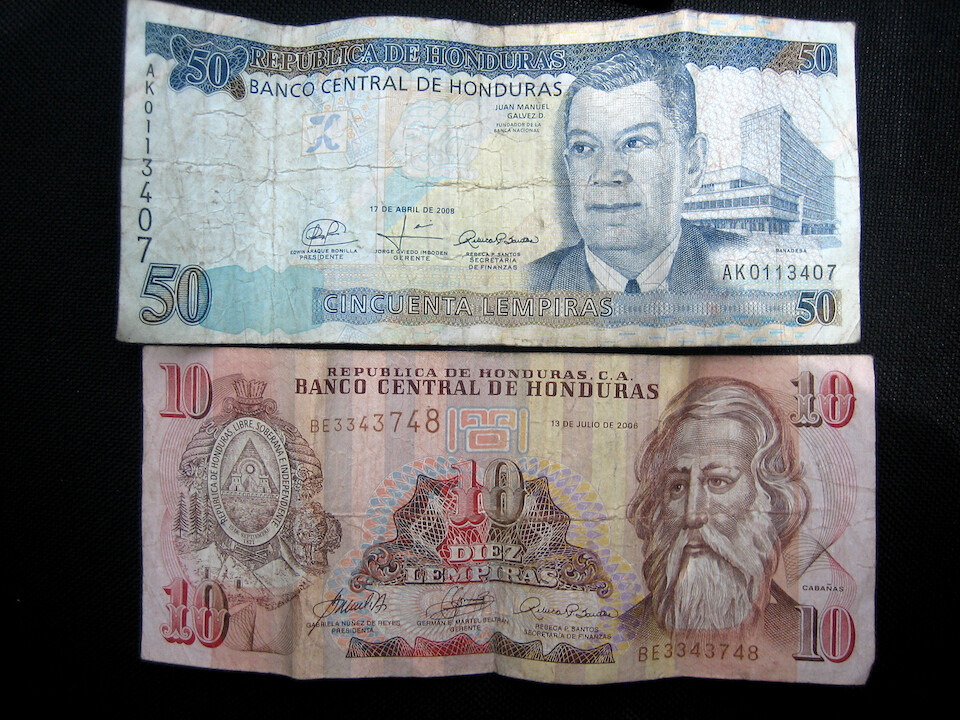
Honduras' currency - The Lempira, USD 1 = L18.50.
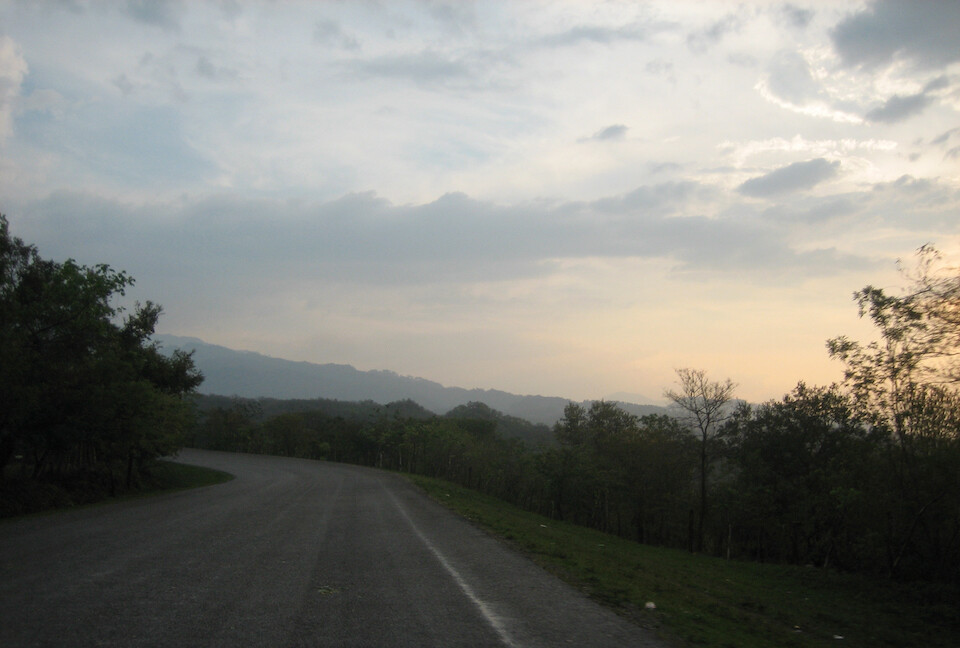
Sunset riding as I got into the former capital of Gracias in the mountains.

Manuel Zelaya, the now-ousted president, who caused a ruckus and put Honduras in the international spotlight last year for wanting to amend the constitution and possibly end presidential term limits, à la Hugo Chavez.
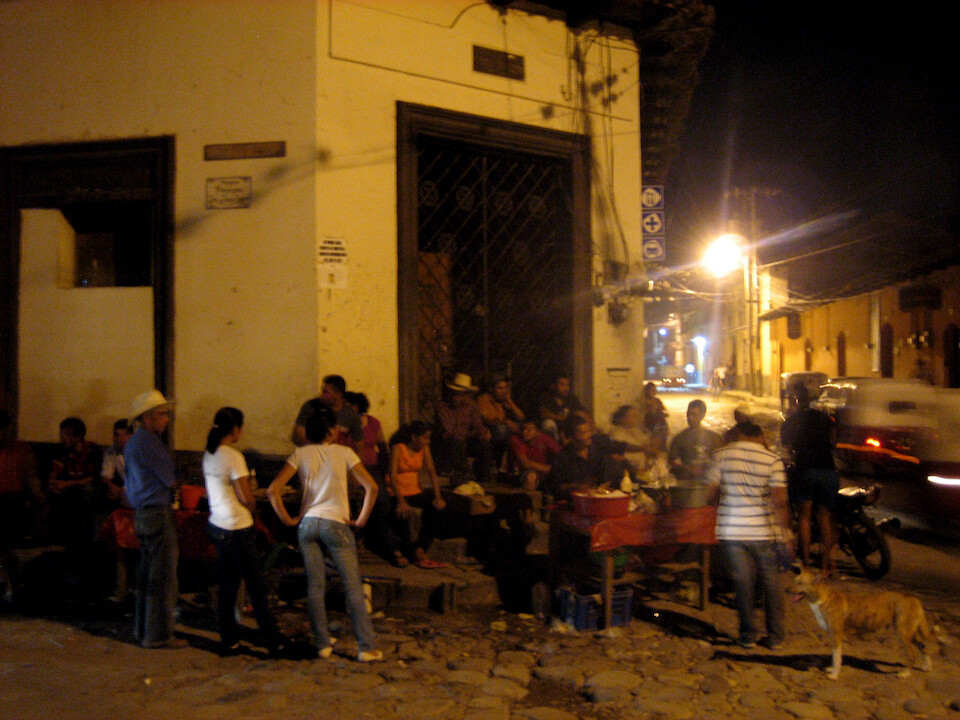
Walking around the old colonial town of Gracias, I followed the old adage in seeking food that if there's a line of locals eating somewhere, it must be good. This guy was making simple chicken barbeque on skewers served with tortillas and a salad for L25 (~USD 1.50).
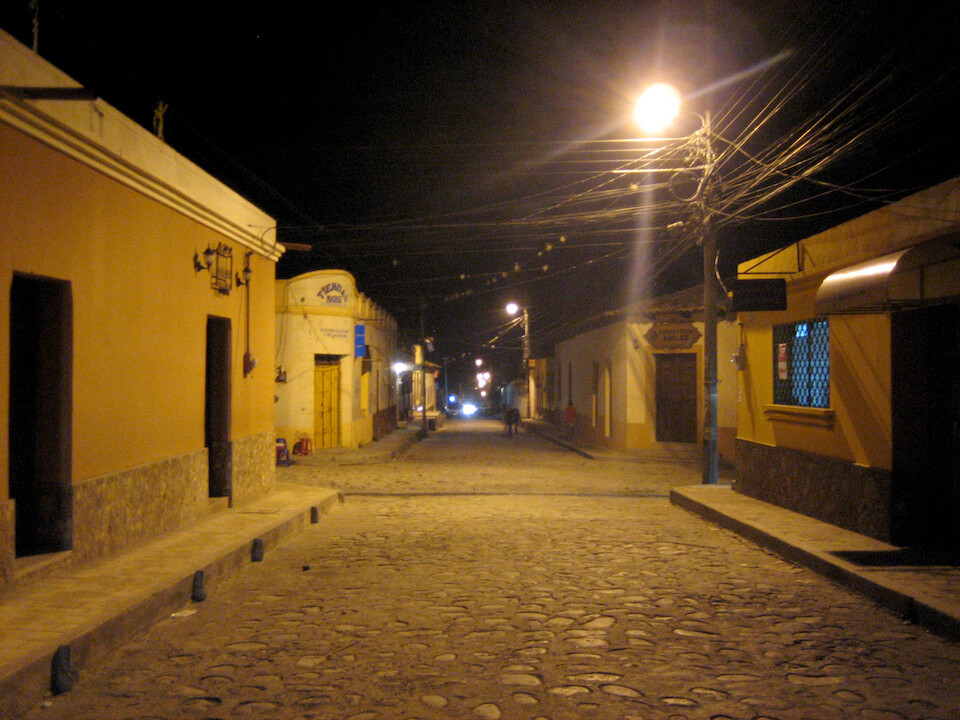
The streets of Gracias at night. This city was founded in 1526 and was for a brief time, the capital of all Spanish-conquered Central America in the 16th century. Some of these buildings are centuries old.
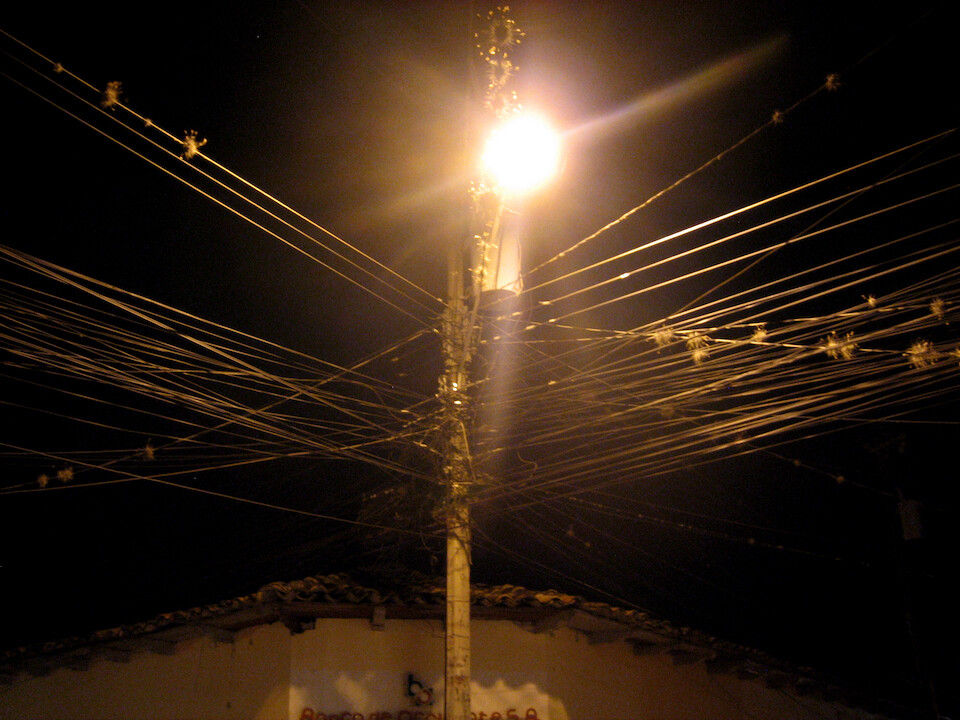
Telephone wire exchange.
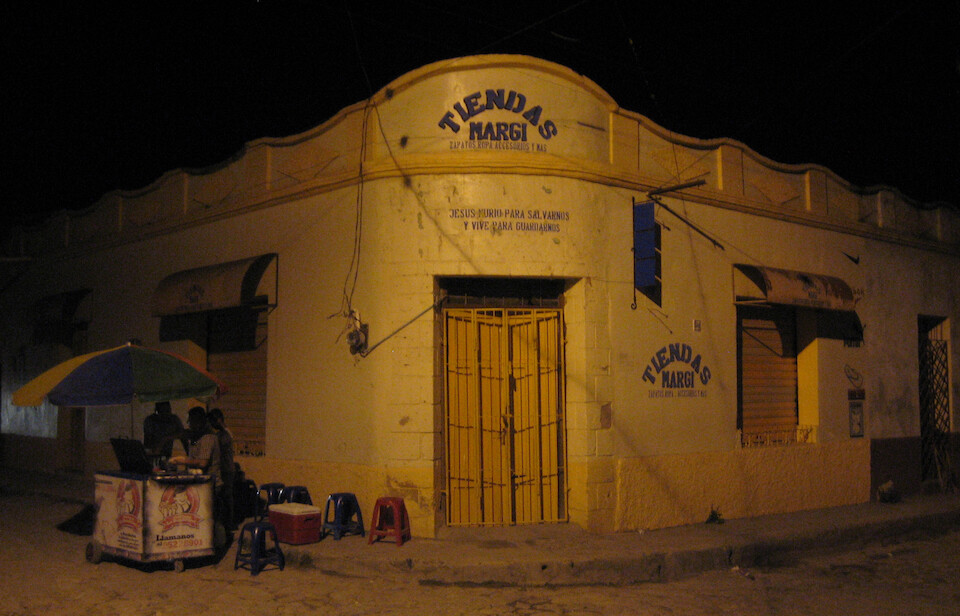
Tienda means a small convenience store.
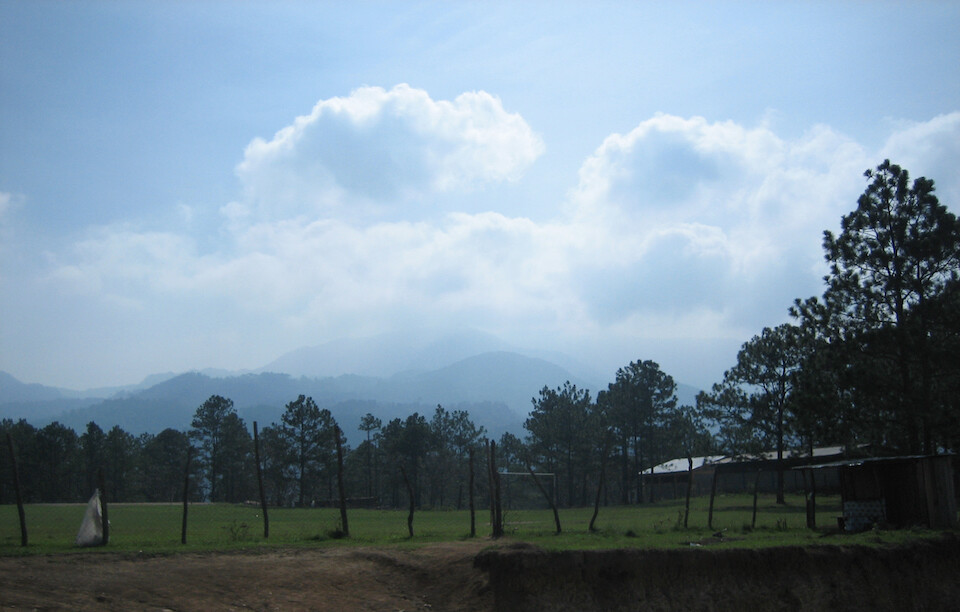
Riding out the next morning further south through the mountains.
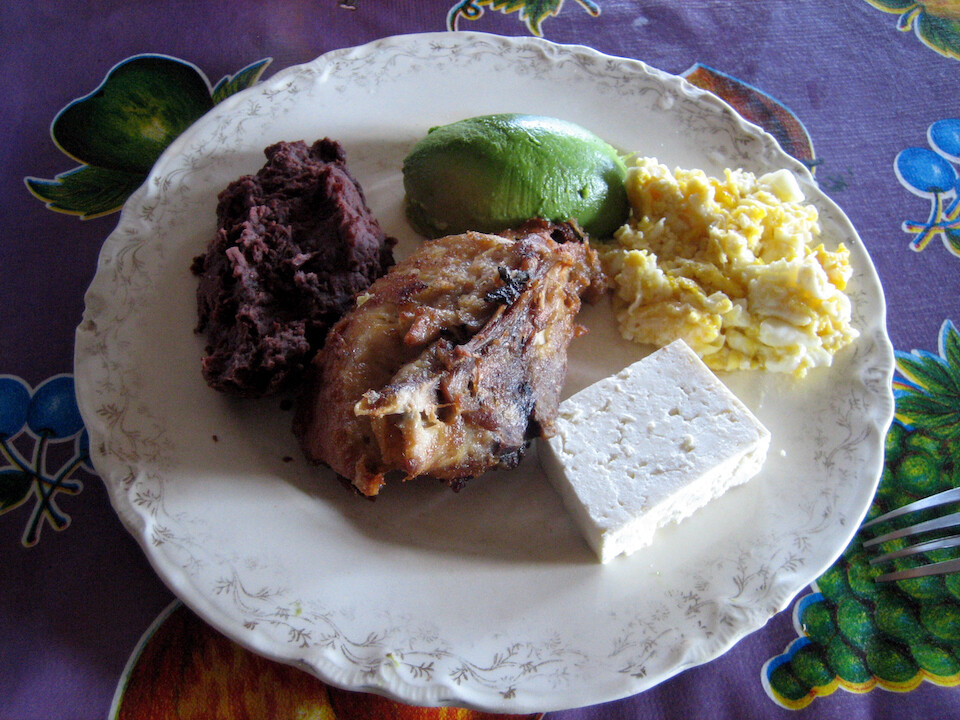
Breakfast of fried chicken with scrambled eggs, refried beans, avocado and fresh cheese, served with tortillas for L40. This was more than I could handle in one sitting, so I packed the rest in my tupperware box and had it for lunch later on.

Heading towards La Esperanza.
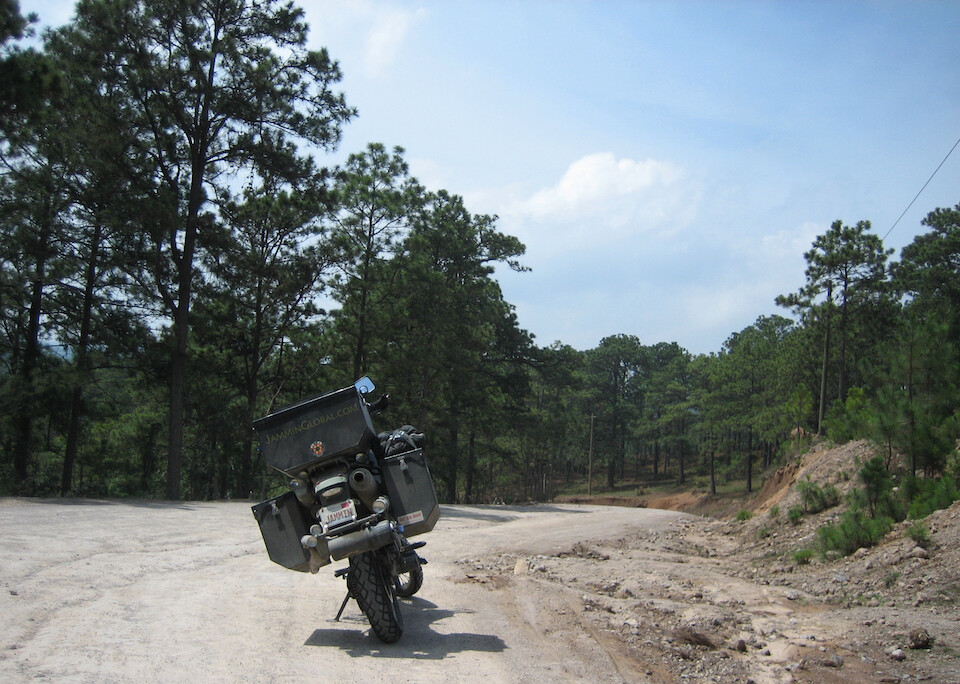
The road turned gravel for about 20 kms.
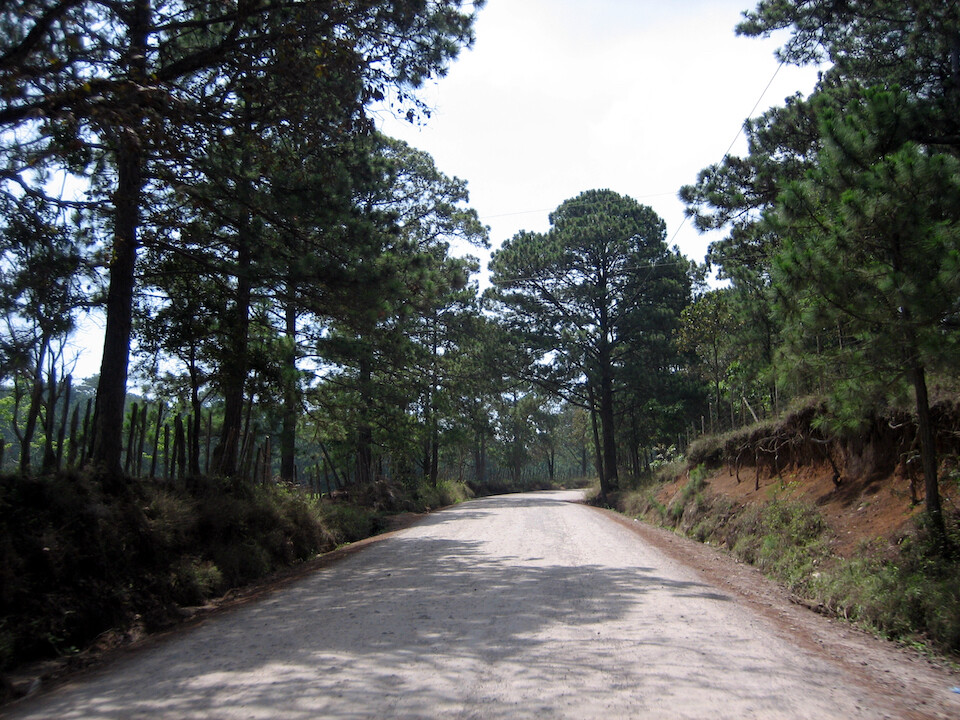
There was very little traffic, this far away from the major towns, which made for an enjoyable ride.
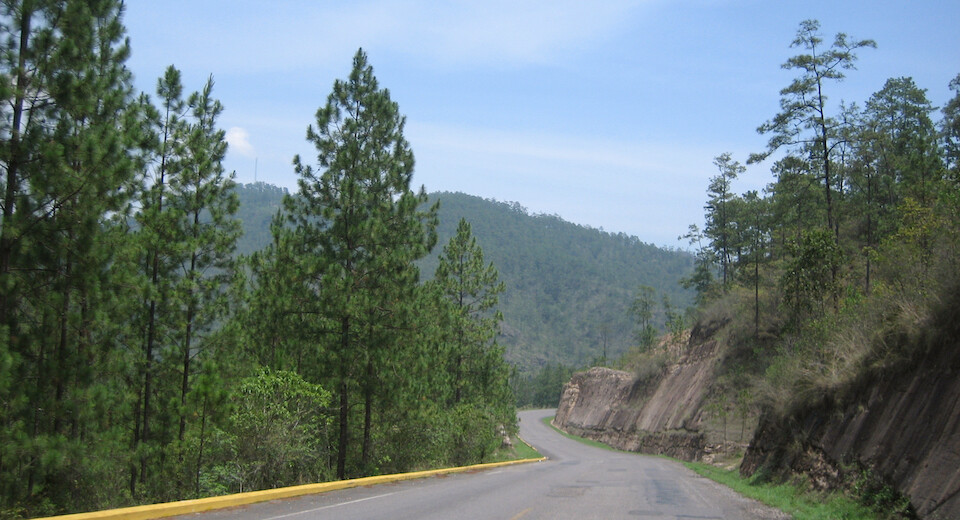
Past La Esperanza, heading up to the main highway.
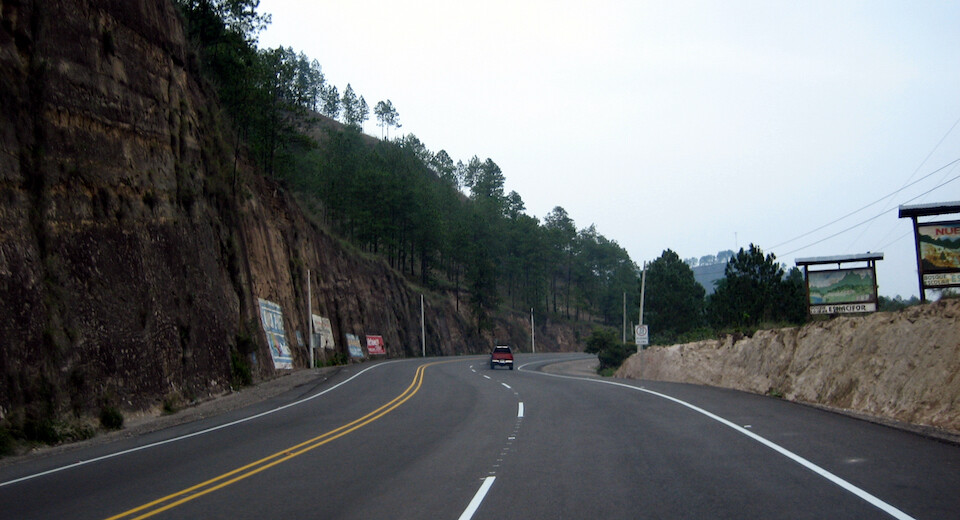
The main highway, Carretera del Norte, connecting the two big cities in Honduras, the capital Tegucigalpa and the industrial city of San Pedra Sula on the coast.
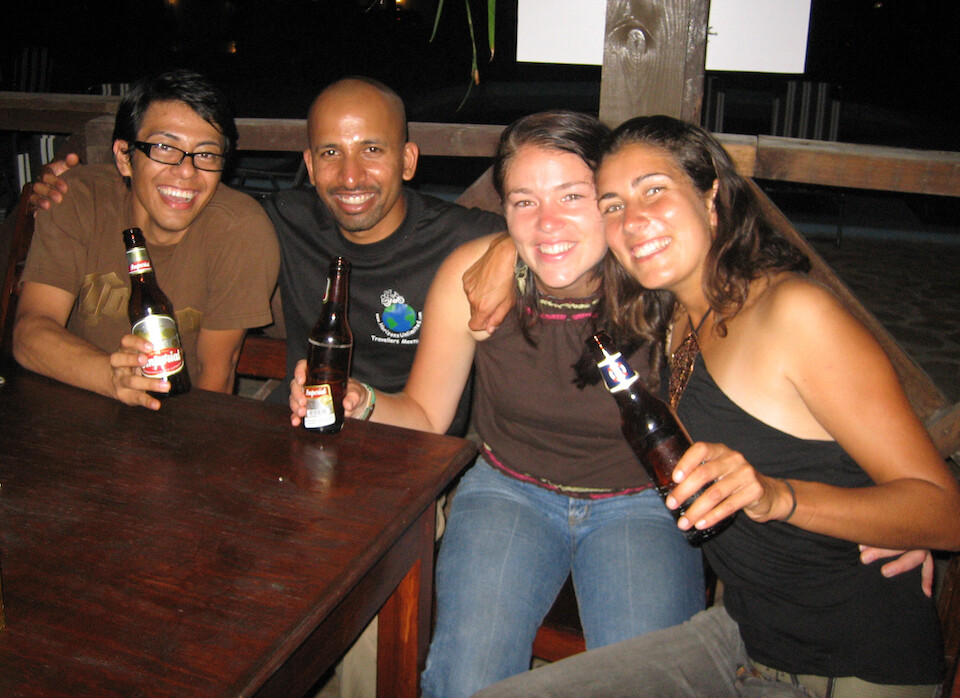
Enjoying a night out in the colonial town of Comayagua with my CouchSurfing host Rony and some of his Peace Corps friends from the States, Lucy and Heide. These girls were stationed in remote villages working on protecting natural environments and they were in town to celebrate Heide's birthday.
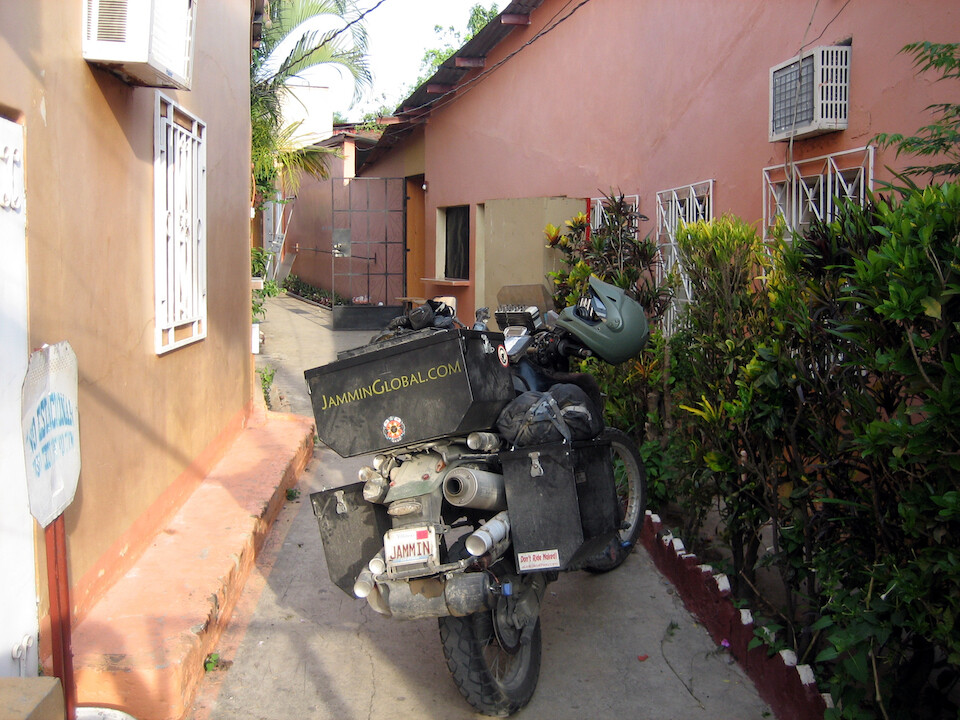
At Rony's house in Comayagua. His family runs a gym and he's currently working at the golf course in town, hoping to head to France soon to volunteer at an orphanage for a few months and travel around Europe.
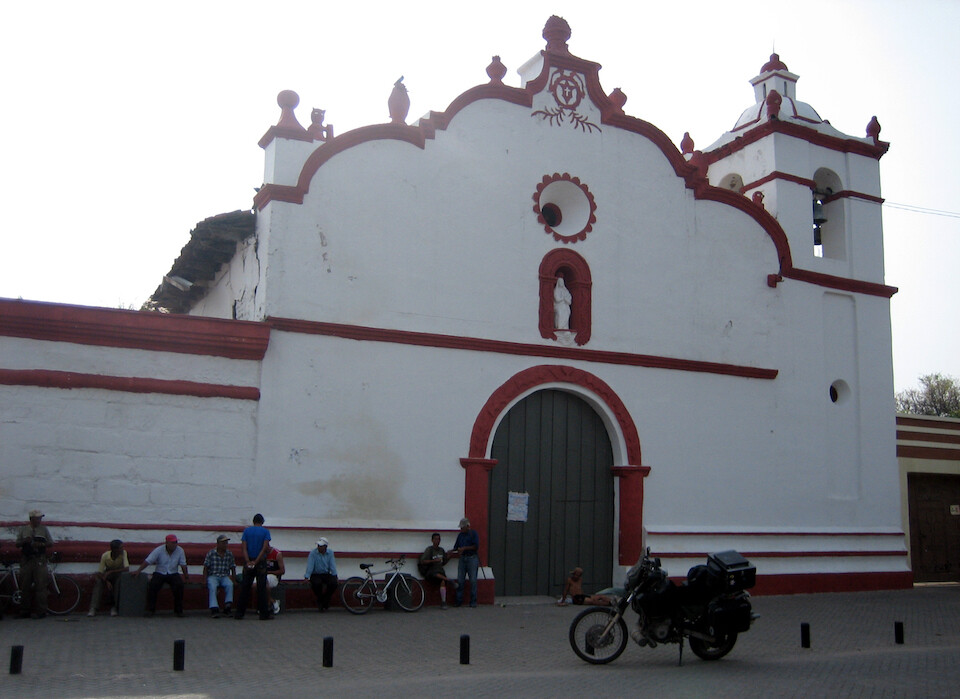
The cathedral in the center of Comayagua, which was the original capital of Honduras, established in 1537. It's undergoing a renewal with help from Spain to preserve its heritage.
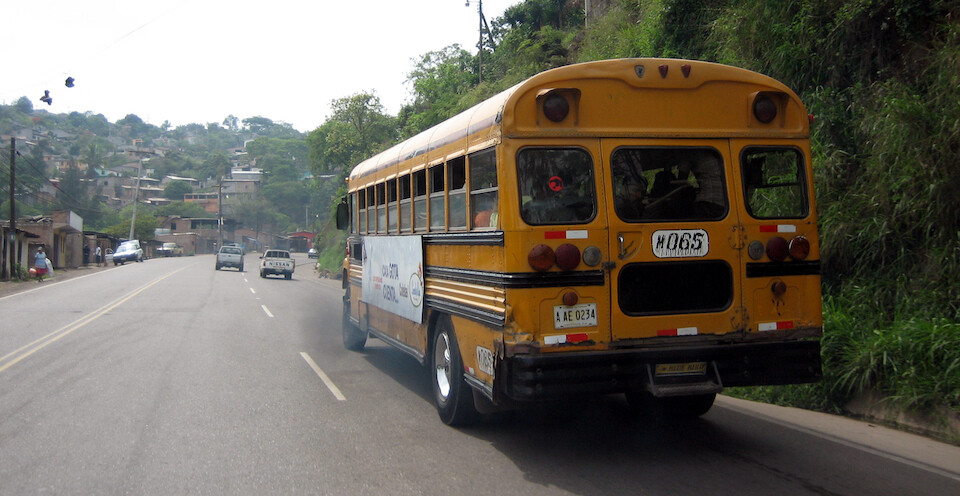
All throughout Central America, a lot of the public buses are old American school buses. To me, it seemed like once they weren't good enough for the US, probably not passing emissions, 'send them across the border, they need buses down there and no one cares about emissions' - except us poor bikers inhaling all that black carbon monoxide.
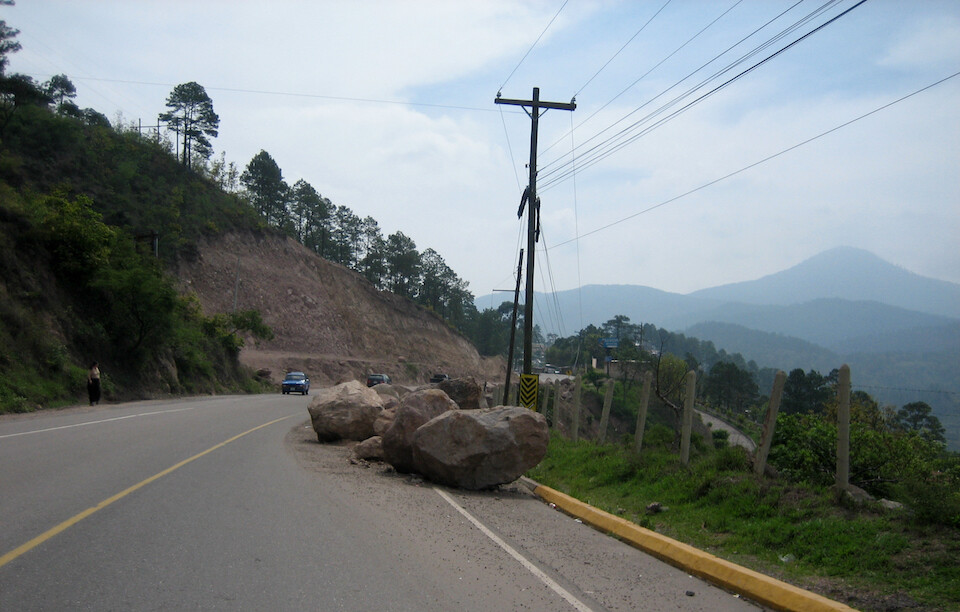
Down here, when you see a sign warning of falling rocks, you better take it seriously.
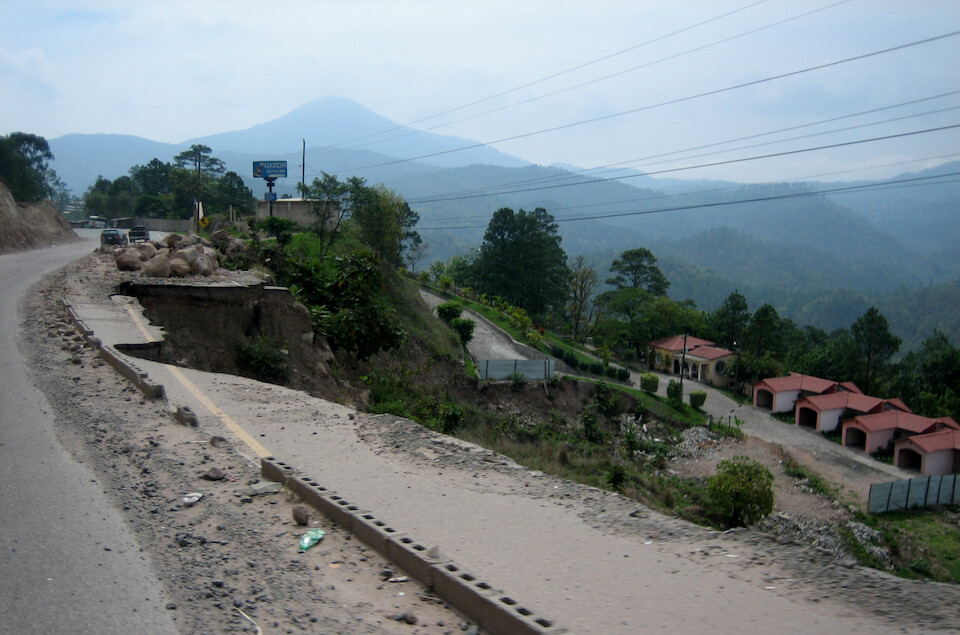
Washed-out road. A good reason not to be riding at night.
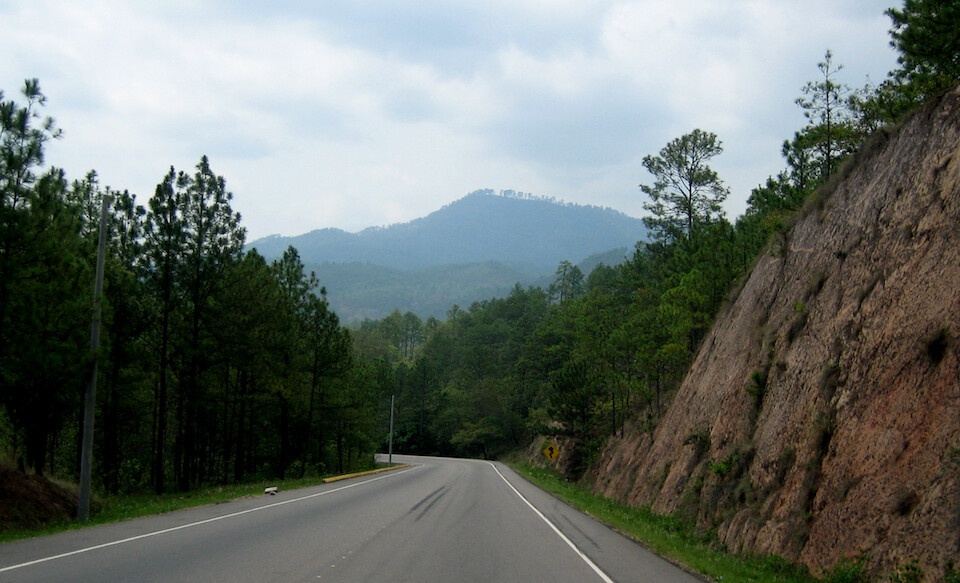
South of Tegucigalpa heading to the Nicaraguan border at Los Manos.

You know you're getting close to the border when you see a line of parked trucks. The paperwork must be a major headache for them.
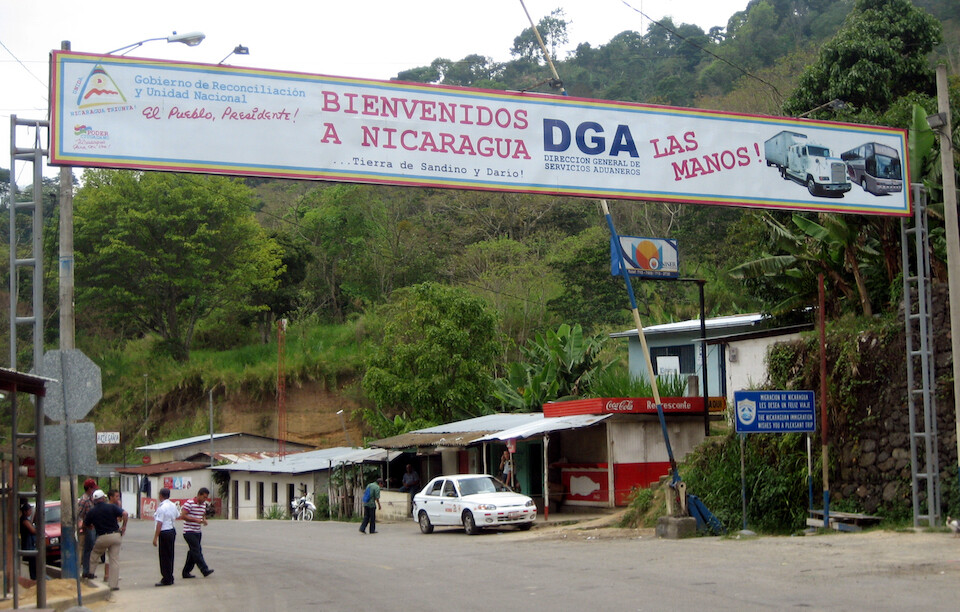
Welcome to Nicaragua.

After paying a $3 road tax, this guy wanted to pose for a picture. Nice friendly first impression of the Nicaragua police, but not for long. They snagged me a few miles down for passing on a solid line, for which another $3 bribe sufficed.
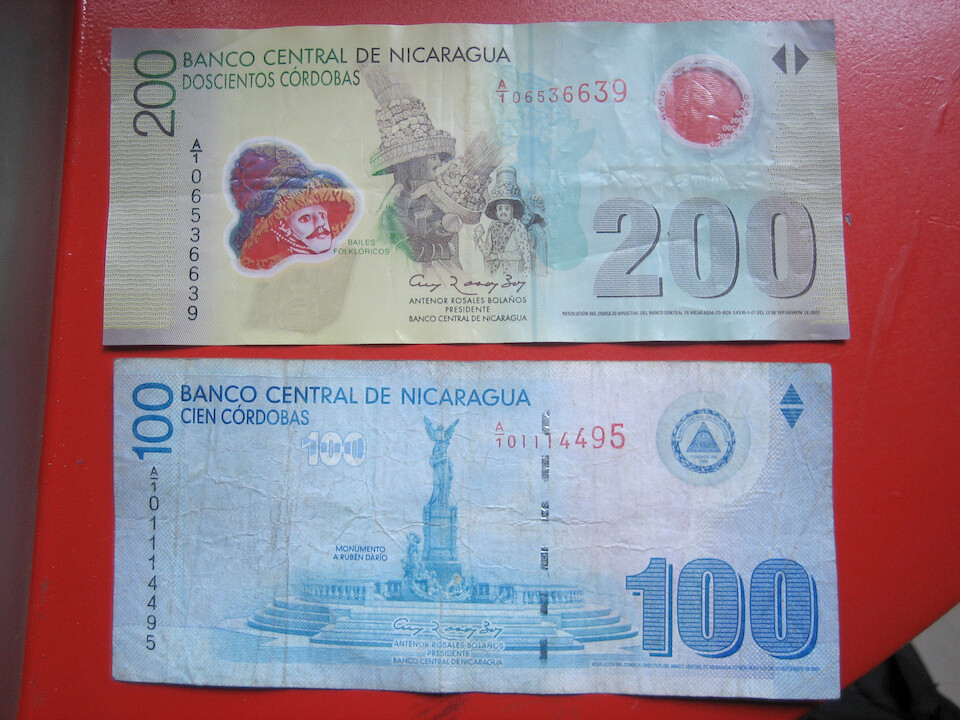
Nicaragua's currency - The Cordoba. USD 1 = C21.
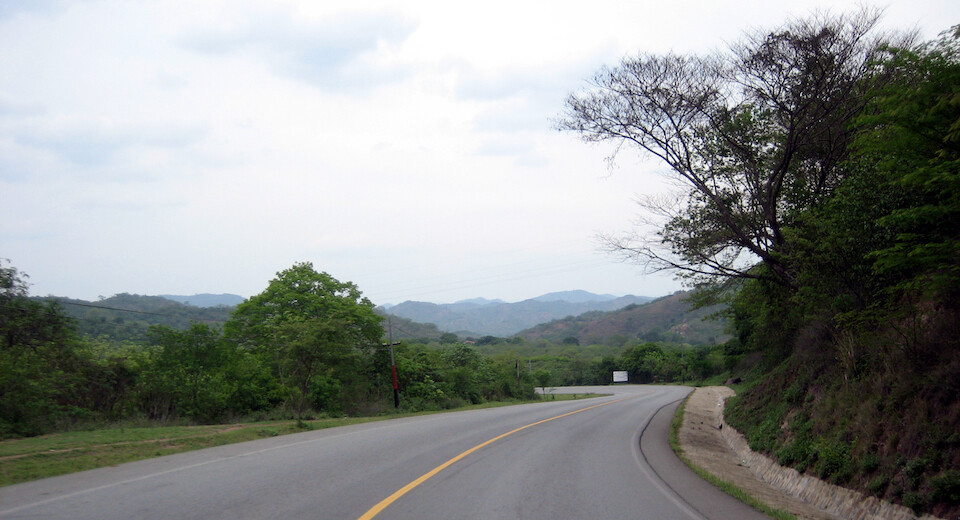
Nice roads, but generally more flat. Heading to the capital city of Managua.
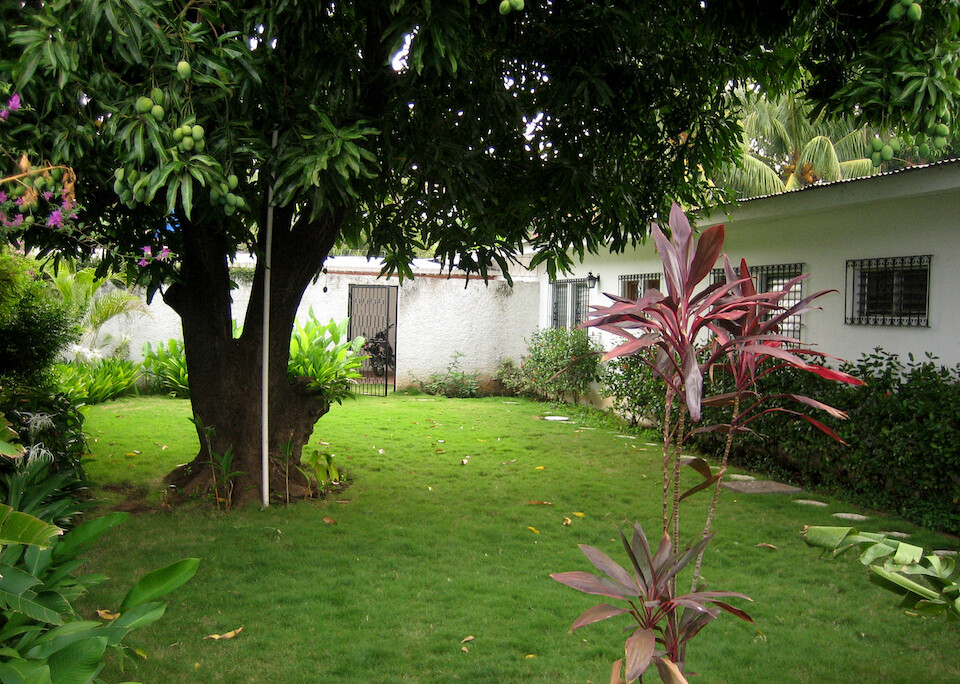
Staying at ADVer Salcar's house in Managua. He was actually in Switzerland but told me I could still stay at his place.
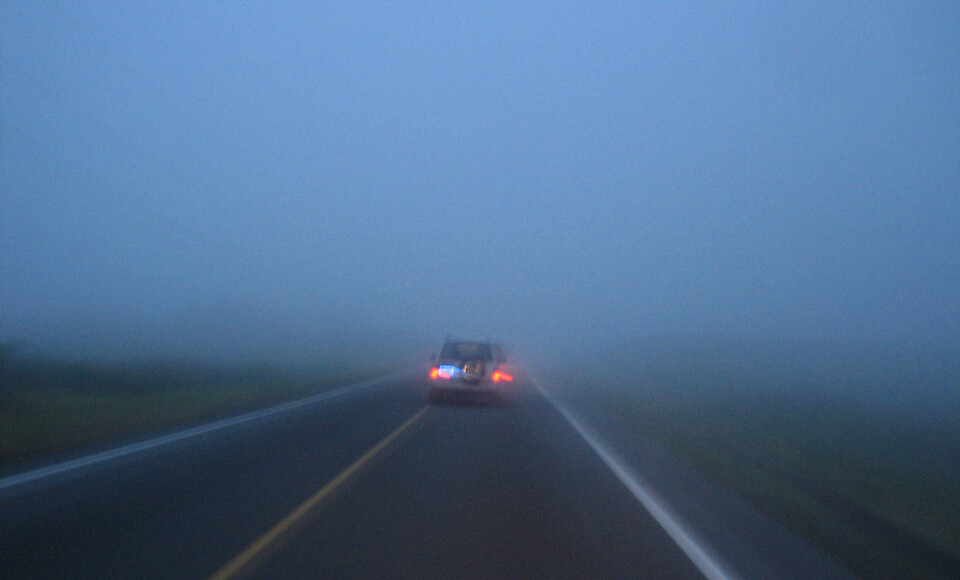
Riding through some dense fog on my way to Granada. I went up and over some mountains, through the misty town of Jinotega, to avoid a known police shake-down spot on the main road from Managua to Granada at Masaya. This is known as one of the most scenic drives in the country as it climbs to 4,000 ft and comes back down to near sea level in Granada.
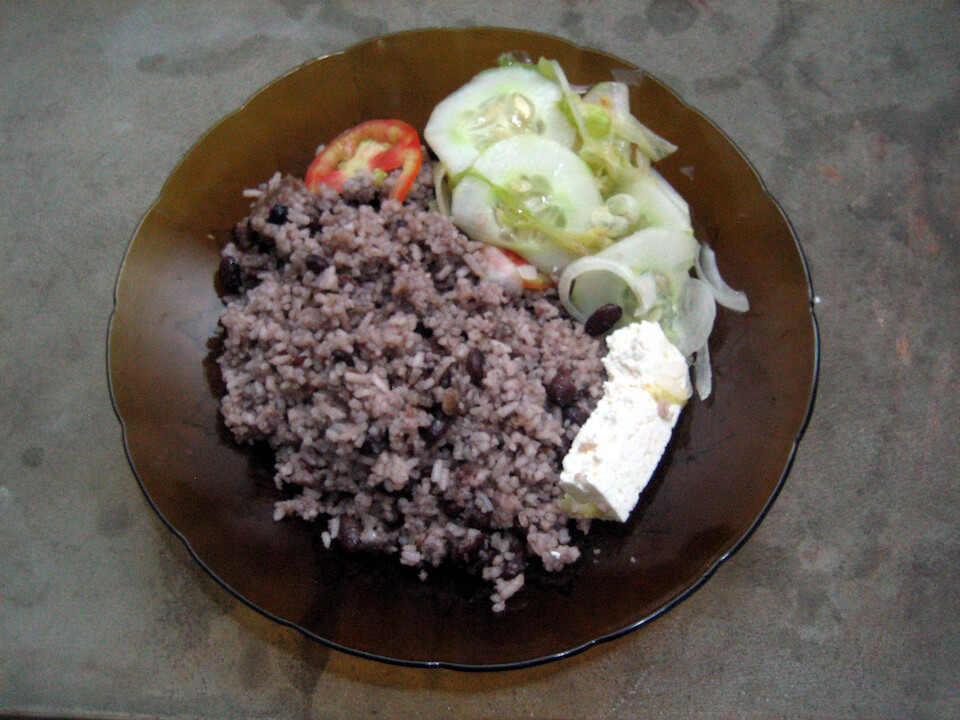
Dinner at my CouchSurfing's host Avi's place in Granada. He's also in the Peace Corps, working on teaching entrepreneurial skills to high school kids. His neighbor prepared this meal for us as they ran out of cooking gas and Avi let them cook at his place. It's a typical meal of rice fried with beans, some salad of cucumbers and fresh cheese.
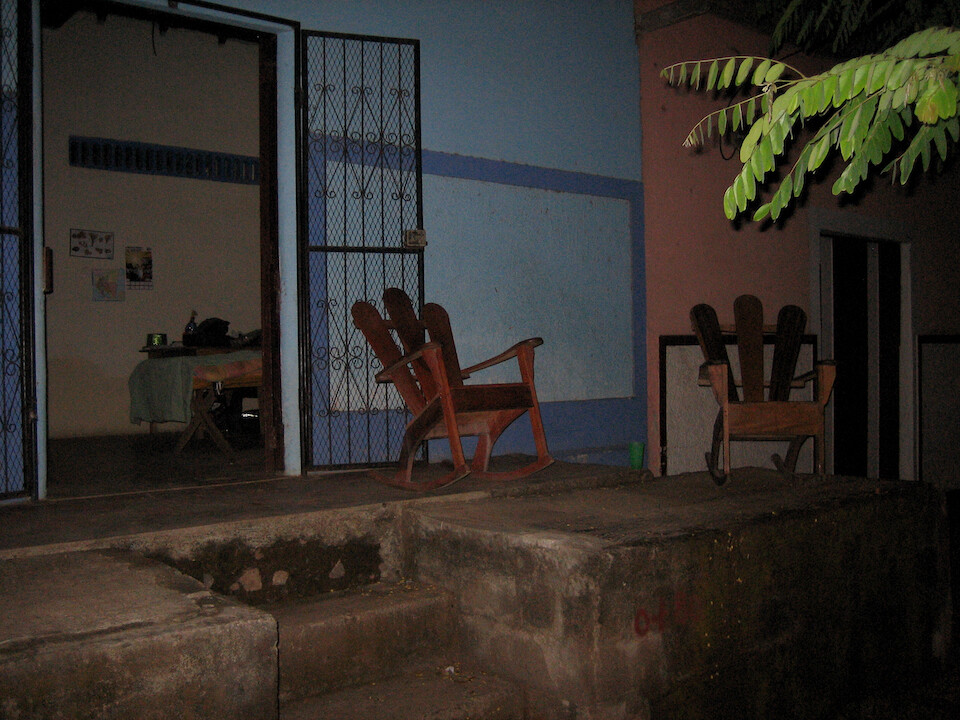
After dinner, we did what most Nicaraguan's do at night, hang out on their porch, since it's hot inside and usually there's a cool breeze outside. Avi's been here over two years and he's winding down his project.
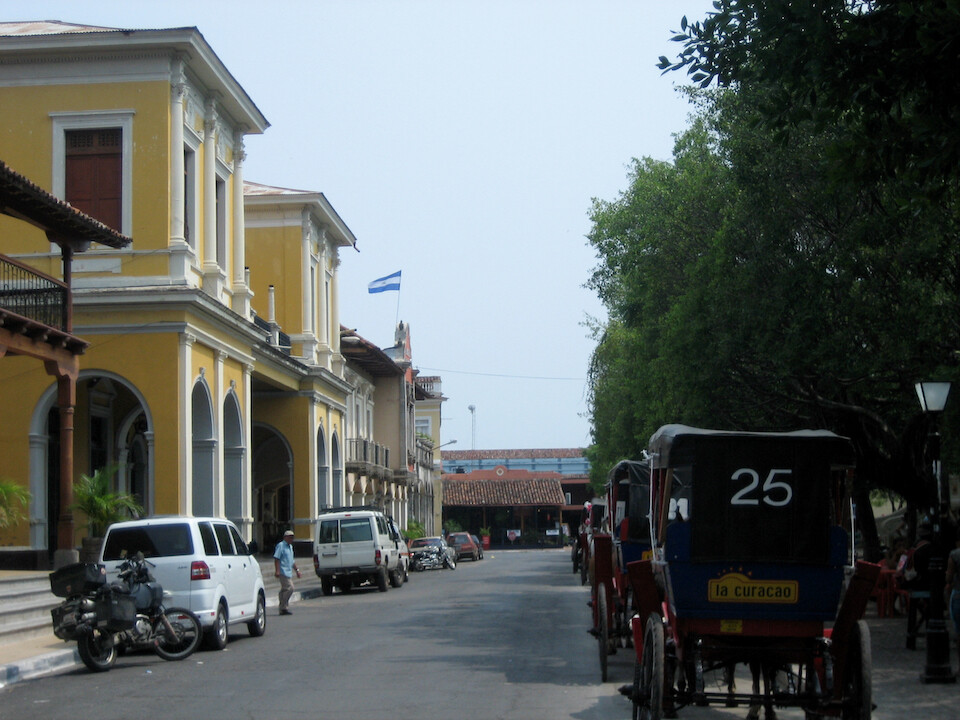
Checking out the main plaza in Granada, the oldest city in Nicaragua, founded in 1524. Being on Lake Nicaragua with access to the Caribbean, it was an important trading post and was wealthy leading it to be ransacked multiple times by British and French pirates from the Caribbean. Recently, it kick-started Nicaragua's tourism with its rich colonial heritage.
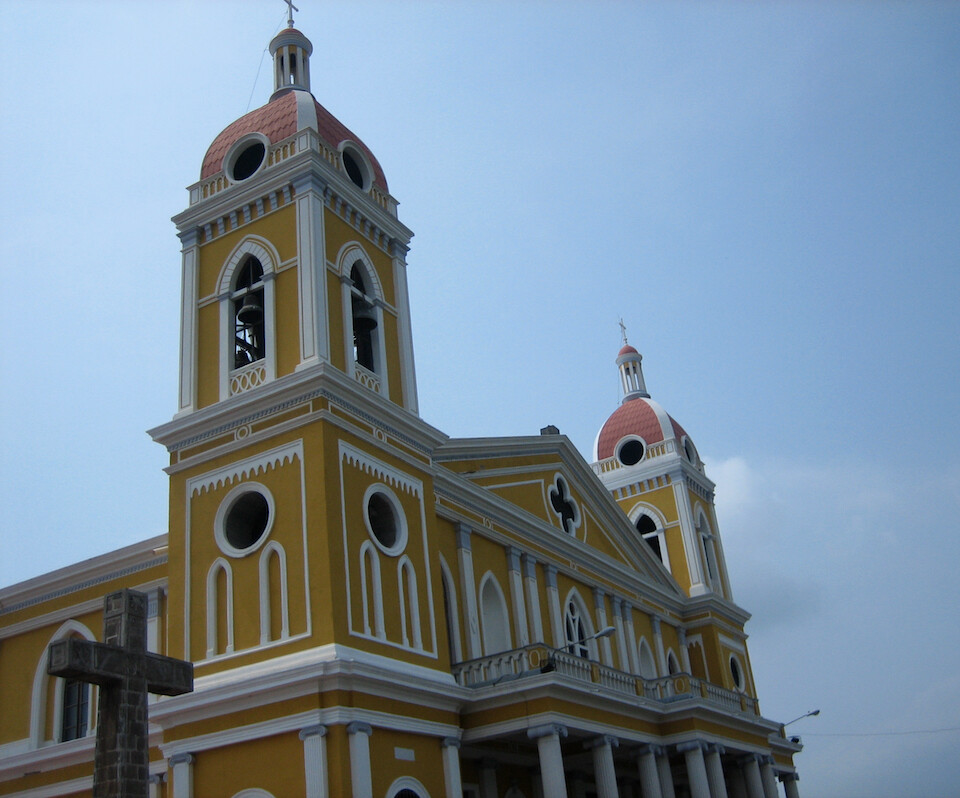
The cathedral in the Parque Central.

Statue in the central park with the inscription in English "devotion and love to all mothers".
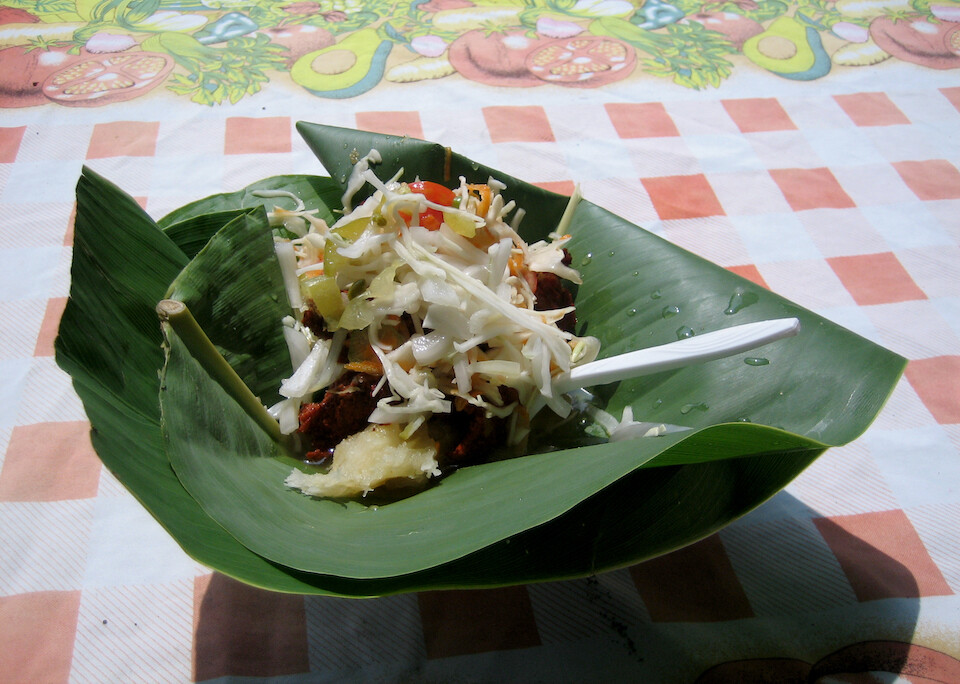
Having breakfast of 'yuca con cerdo' - cassava or manioc with grilled pork. I like the taste of cassava; it's slightly sweet and the texture is interesting too. It's a staple food in many developing parts of the world, especially Africa as it's a hardy plant and is considered the third largest source of carbohydrates in human diets.
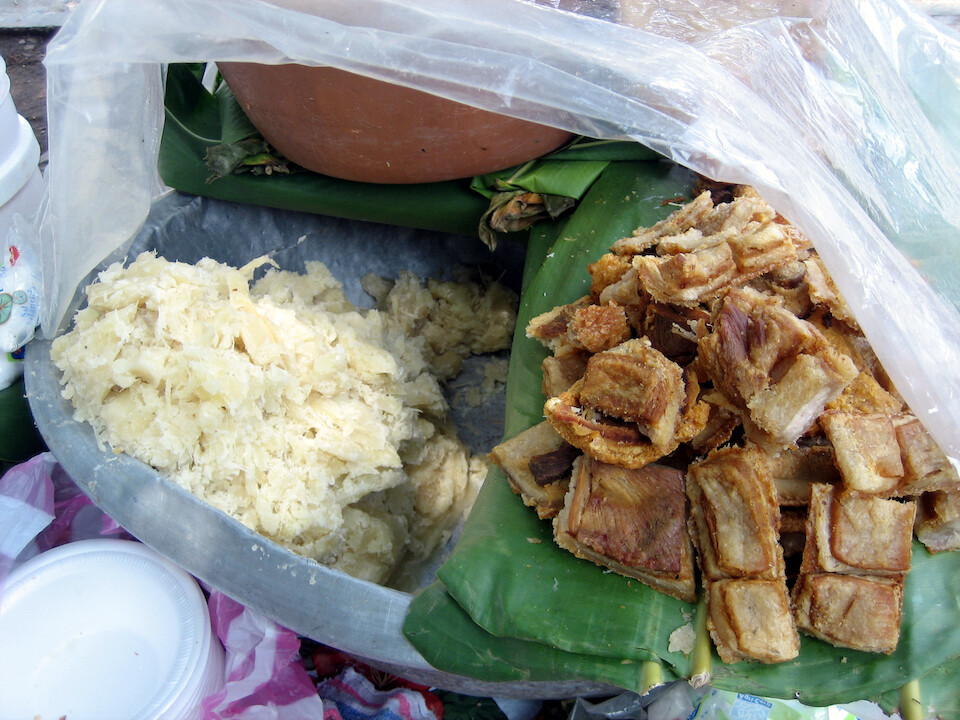
The yuca and pork at the food seller's stand.
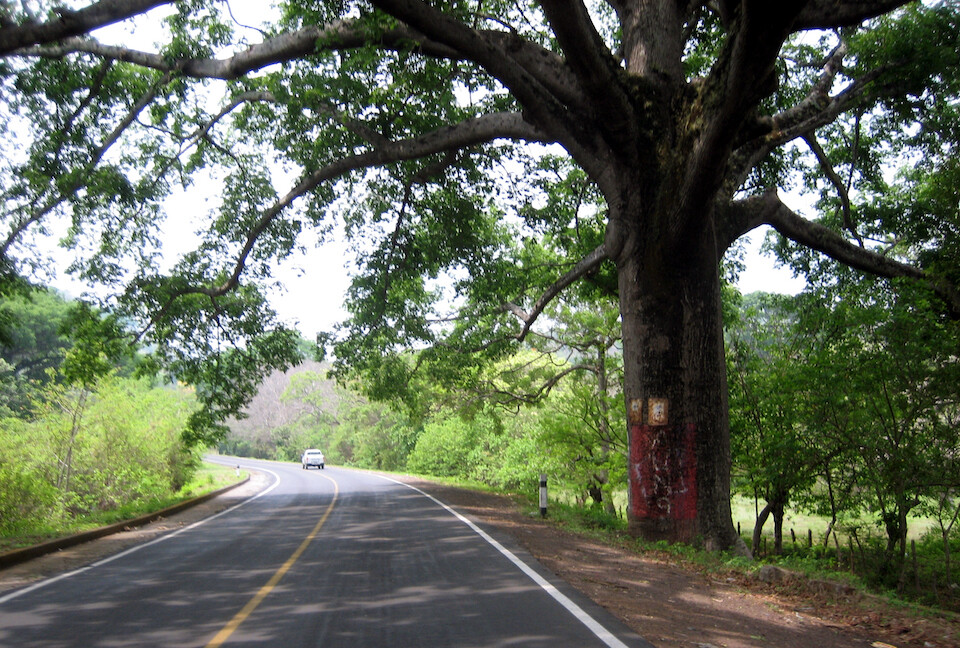
Heading south out of Granada, towards the Costa Rican border.
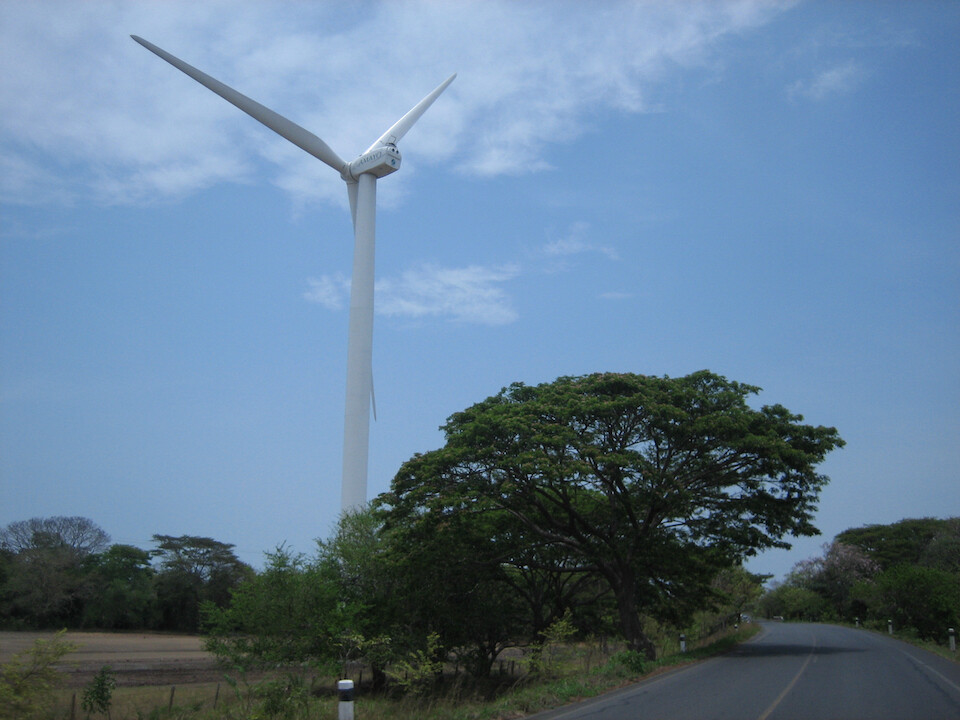
Windmills on the shore of the huge Lago de Nicaragua.
Next: Costa Rica, The Rich Coast
Previous: Guatemala, Part 2: Tikal